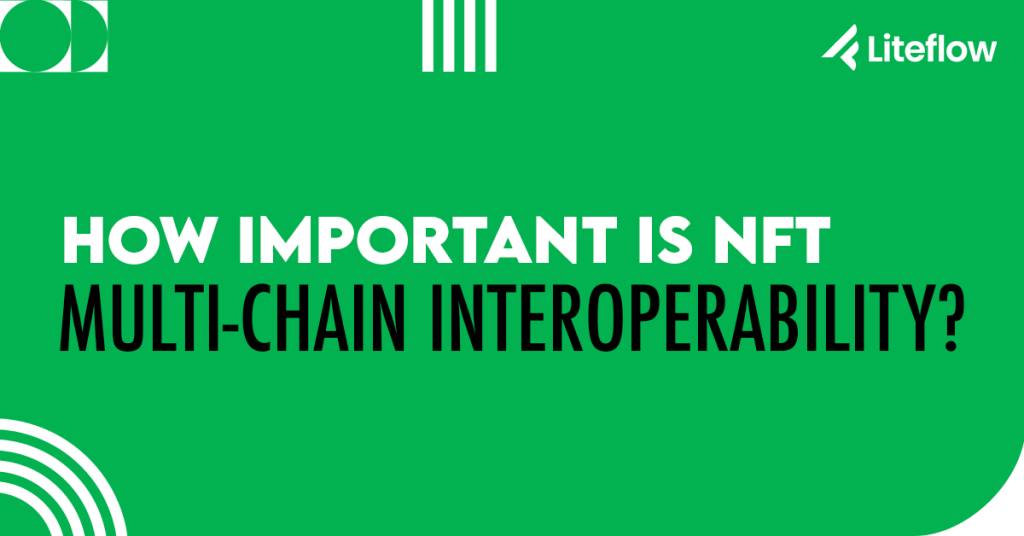How Important is NFT Multi-chain Interoperability?

Blockchain technology is being deployed across verticals, for different use cases. With each use requiring its own specs and protocols, interoperability is critical to ensure a strong future for the technology. A number of different chains are rising in prominence and usage, making it clear that the future is multi-chain.
One chain will never be suitable for all use cases. For example, gaming on Ethereum is not practical given the transaction costs and speed. Multi-chain solutions address this challenge, allowing users to access and engage with projects on different chains, creating seamless cross-chain experiences.
This is a massive opportunity for partnership, as projects can connect and grow together without the concern of sharing a blockchain. As adoption increases, projects will have an easier time attracting new customers and users with a frictionless multi-chain experience. Simple applications deployed in the NFT space will allow users to interact with any chain they’d like.
While current projects are minted on one chain, underlying infrastructure will begin to accommodate a number of blockchains. This will allow users to access and engage with projects on different chains, creating seamless cross-chain experiences. The goal is to simplify so that many blockchain networks can flourish, each with its own unique ecosystem, and NFT projects can exist without the limitations of a single chain.
Here are some examples of how NFT projects are already exploring multi-chain interoperability…
Yuga Labs & ApeChain
You are probably familiar with the massively successful NFT collection, Bored Ape Yacht Club. This collection comes from YugaLabs, who recently alluded to plans to explore their own blockchain.
This news comes after their controversial metaverse deed NFT launch wreaked havoc on the Ethereum blockchain, surpassing $176 million in transaction fees in only 24 hours. This poor minting experience led to the suggestion from Yuga that they would need to create a custom blockchain to ensure the project could scale.
The importance of multi-chain interoperability is highlighted in this news story. Arguably the largest NFT project is telling the world that a new blockchain is needed for them to scale and succeed. Yuga recognizes the critical importance of a smooth customer experience and the limitations that exist when solely operating on the Ethereum network. This has led them to develop new solutions that increase access and engagement, preparing for the multi-chain future.
Nickelodeon is Already Utilizing Multiple Chains
Globally recognized entertainment and media brand, Nickelodeon, recently launched their first NFT collection to great success. Instead of taking a generic approach, Nickelodeon developed and deployed a unique NFT collection that functions on multiple blockchains.
The multi-chain functionality is a key element to the collection’s utility and user experience. The collection minted on Polygon, but can be withdrawn on Ethereum. This is carried out through a cross-chain swap that enables NFT withdrawals and deposits across chains. The purpose here is to enable an NFT game that allows holders to partake in challenges and earn reward NFTs. The reward NFTs can be collected and redeemed for more exclusive NFTs.
Executing an NFT game with lots of minting, swapping and transactions, would be way too expensive on Ethereum. This is why Nickelodeon chose Polygon for the gaming functionality, while allowing users to withdraw on Ethereum, the gold-standard for NFT collectibles. This is how Nickelodeon is using multiple chains to achieve the best of both worlds and deliver an awesome user experience.
Multi-chain Marketplaces
NFT marketplaces become much more powerful when they expand beyond the limitations of a single blockchain. There are several prominent blockchains currently in the NFT space, including Ethereum, Polygon, BSC, Solana, and Avalanche. Marketplaces that enable the trading of NFTs on several of these chains in the same ecosystem create a frictionless user experience and retain engagement.
Liteflow is extremely focused on the development of marketplace infrastructure that is multi-chain. We see first hand how the industry is evolving, and what is required to take NFTs mainstream. This is why we are already providing solutions that allow companies to launch their NFT marketplace on any EVM chain. This is one of the reasons that we can deliver future-proof solutions, ready to scale alongside our customer’s business.
If you’re interested in exploring NFT marketplace infrastructure and tooling, and deploying a seamless, secure and future-proof Web3 experience, schedule a live demo with Liteflow today.